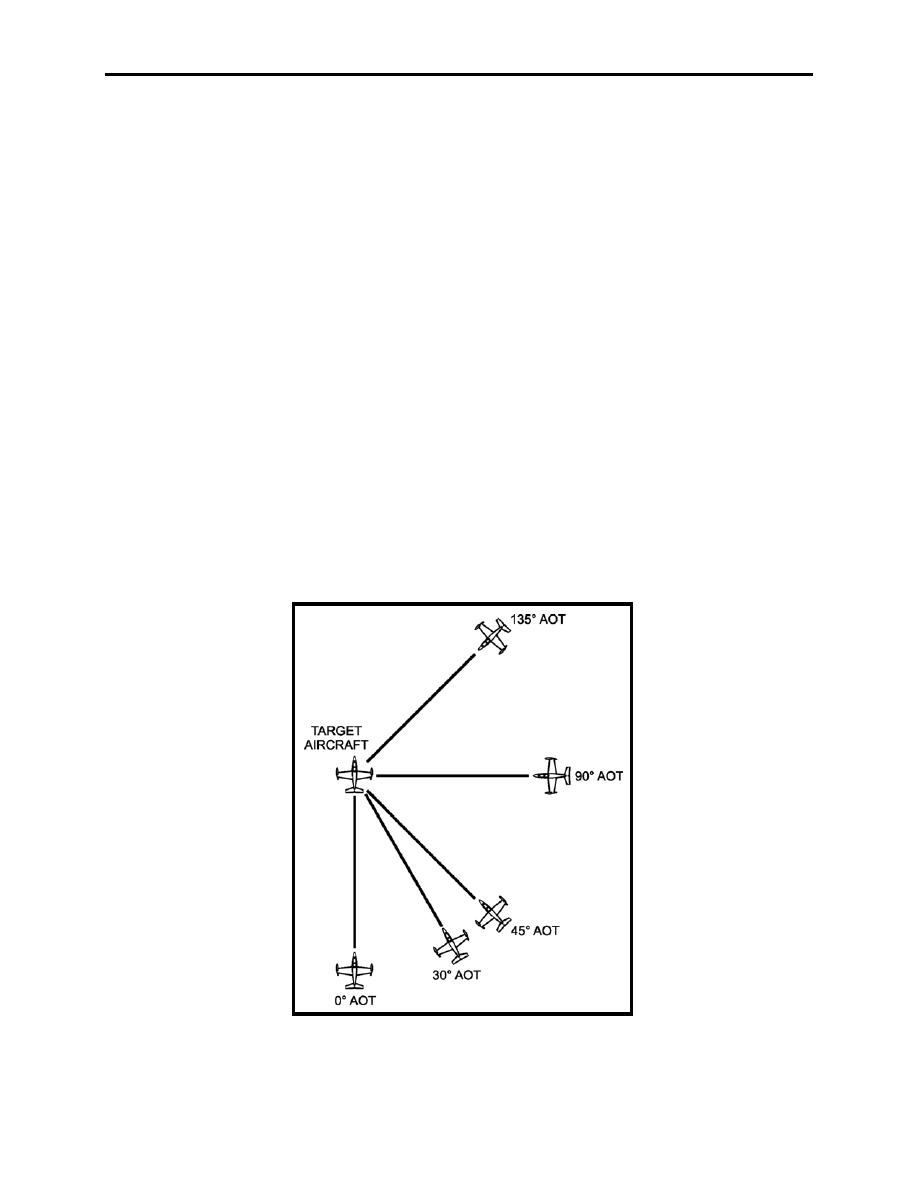 |
|||
|
|
|||
|
|
|||
| ||||||||||
|
|  BASIC FIGHTER MANEUVERING (BFM) THEORY
CHAPTER NINE
916. BFM GEOMETRY
Overview
With an understanding of basic aerodynamics, we can introduce the geometry of BFM required
to get the bandit into your weapons envelope and kill him. While fleet aircraft are armed with
weapons that can be employed from all aspects, we will simulate our engagements with a rear
quarter 20 MM gun. Our most basic goal therefore is to maneuver our fighter to the bogey's rear
quarter such that we can "shoot" our simulated forward firing cannon.
Range, Angle-Off, And Closure Rate
Range, angle-off the tail, and closure are the three basic geometric variables of BFM that the
fighter crew manages in order to achieve an offensive position on a bogey.
Range is simply the linear distance between two aircraft. All weapon envelopes are defined in
terms of range. You must place your aircraft in the guns envelope in order to get a good shot.
Angle-off the tail (AOT) is your angular position off the bogey's tail. Figure 9-9 illustrates
different AOTs referencing a target aircraft. Weapon envelopes are also defined in terms of
angle-off. For a given range and closure, the smaller the AOT, the more offensive a fighter will
be. Later in this chapter, we will see that the weapons envelope is defined by a combination of
AOT and range.
Figure 9-9 Angle Off The Tail (AOT)
9-15
BASIC FIGHTER MANEUVERING (BFM) THEORY
|
|
Privacy Statement - Press Release - Copyright Information. - Contact Us |